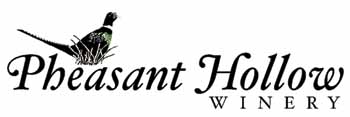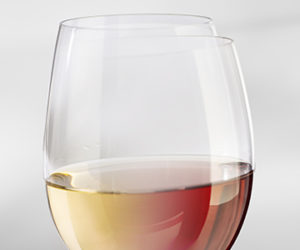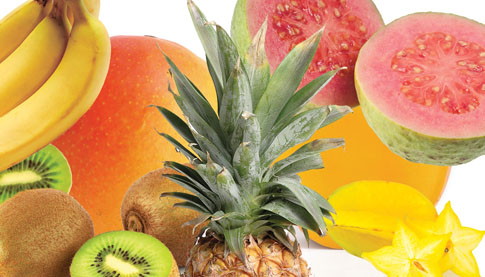 Summertime is the season of fruits and berries. For winemakers on the professional and amateur levels, it is also the season for fruit and berry wines. There are as many country wines as there are fruits and vegetables on this Earth, but some are more frequently made. One such wine is raspberry. Available in abundance either fresh or frozen, winemakers have many options when using this fruit. Denny Franklin and Christine Lawlor-White give us their inside information on making this wine commercially and offer their tips to the winemaker at home. Coincidentally, they both find frozen raspberries to be the best plan of attack!
Summertime is the season of fruits and berries. For winemakers on the professional and amateur levels, it is also the season for fruit and berry wines. There are as many country wines as there are fruits and vegetables on this Earth, but some are more frequently made. One such wine is raspberry. Available in abundance either fresh or frozen, winemakers have many options when using this fruit. Denny Franklin and Christine Lawlor-White give us their inside information on making this wine commercially and offer their tips to the winemaker at home. Coincidentally, they both find frozen raspberries to be the best plan of attack!
 Denny Franklin has been the winemaker at Pheasant Hollow Winery in Whittington, Illinois since 1999. Prior to this he worked for three years at Spring Pond Vineyards.
Denny Franklin has been the winemaker at Pheasant Hollow Winery in Whittington, Illinois since 1999. Prior to this he worked for three years at Spring Pond Vineyards.
If I were to give my main tip to successfully making raspberry wine, it would be to not water it down too much. That seems to be the biggest mistake among hobbyists. We go to great lengths to keep our water additions at a minimum. Too much water really dilutes the flavor of this wine, and it will leave you wondering what went wrong.
Our process starts by bringing in frozen raspberries, which we then put in half-ton bins. In the meantime, we use a steamer, which generates extremely hot water, to dissolve the sugar that we are using. This process gets the sugar into solution with a minimal amount of water. After the cane sugar is dissolved, we then transfer over to the frozen raspberries. This results in a semi-frozen concoction, which we stir vigorously with a shovel. We keep close tabs on the temperature and at 50 ºF (10 ºC) we pitch the yeast.
Obviously, the volumes we deal with are much bigger than the average home winemaker. Our raspberry wine requires about 800 pounds (360 kg) of frozen raspberries, 200 pounds (90 kg) of sugar, and 20 gallons (76 L) of water. This results in 125–150 gallons (475–570 L) of wine. We add pectic enzyme with our sugar solution while the raspberries are still frozen, so this is in solution in our 1/2-ton bins while the raspberries thaw (to around 50 ºF or 10 ºC).
Between the sugar and the raspberries, we are looking to start at 21–22 ºBrix. This is an important target, since above that I find the wine gets too hot, too alcoholic and this detracts from the fruit flavor of the wine. Below that, I think the wine is too thin to be impressive.
I use Lalvin yeast, EC-1118. This yeast ferments strong, and is a good, clean fermenter. We also add some Superfood to help the yeast — about 1 gram per gallon (3.8 L) of finished wine is a good target to work with.
Over the next 7–8 days, we punch down two times per day. Temperatures here typically get up to around 75–80 ºF (24–27 ºC). We shoot for 0 ºBrix, but basically let fermentation go until the yeast runs out. Like I said, that’s usually at a week or a bit more. Once fermentation is complete, we press. Readers should note that with raspberries, the press can be very difficult. All you are pressing is mush, so please be careful and go slow. We use a bladder press, and we put a screen on it that has little holes.
Then we slowly press. I have found that if we press too quickly, the mush will just blow right out of the press, and that makes a mess. So, since the goal is to extract as much juice and flavor as possible, plan on keeping this part of the winemaking process very deliberate.
We add some bentonite fining to drop out the proteins that may cause haze. Use about 1 gram per gallon. After fining, we will put the wine somewhere where it is cold; 26–30 ºF (-3 to -1 ºC) is a good range to store it. This lets all the sediment settle more quickly. Our winery uses a filter to make for a nice clean wine. After the sediment drops out, home winemakers can just keep racking until the wine is clear.
At this stage, the finished wine is dry. We like to back-sweeten — it gives us more control over the finished wine as opposed to trying to stop the yeast at some point during fermentation. The back-sweetening is done to taste, but we target 4–6% residual sugar. I use a chart (home winemakers might be able to get something like this at their winemaking store) that tells me how many pounds of sugar versus wine gives me the residual sugar target I want. The additions typically work out to somewhere between 0.68–1.0 lb. per gallon (81–118 g/L).
We also add sorbate to the wine, as you would a grape wine with residual sugar to inhibit potential re-fermentation. We try to keep our free SO2 to a minimum of 50 ppm. But if you don’t have a chart, just go really slow and add until the wine suits your taste.
I think the best process for back-sweetening is to take a little bit of wine off, add the sugar, then add that solution back to the batch. It makes for a better product, and you don’t need additional water for dissolving the sugar.
As for types of raspberries, for the price you can’t beat the red fruit. But if you want to pay more and have a really awesome product, try the black raspberries. We make a “Black and Blue,” and sell about 8,000 gallons (30,400 L) per year. But our red raspberry is our best selling fruit wine, hands down. It has a nose that you just want to sit around and smell all day.
 Christine Lawlor-White is winemaker at Galena Cellars Winery in Galena, Illinois. The winery has been the Pacesetter Winery of the Year for the last three years at the Indy International Wine Competition.
Christine Lawlor-White is winemaker at Galena Cellars Winery in Galena, Illinois. The winery has been the Pacesetter Winery of the Year for the last three years at the Indy International Wine Competition.
Our process in making raspberry wine involves using frozen fruit. Even if we get fresh fruit, we still freeze it. This serves several purposes. Freezing breaks down the cell walls, and it also helps to de-juice the fruit. On the negative side, thawing brings a significant problem — while the fruit is slowly melting in the water, this concoction becomes a rich place for bacteria to start growing.
We overcome that problem by adding 50 ppm of SO2 into solution and then covering the entire must with a layer of cane sugar during thawing. The sugar acts as a good barrier to bacteria getting a foothold, and once the fruit is thawed, the sugar just gets stirred into solution.
At this stage, the must is still pretty cold and yet, again because of contamination concerns, it is important to start fermentation right away. We have experimented with some yeasts that work at 40 ºF (4 ºC). This includes the R2 strain and some other experimental types.
But generally we like yeasts we can add at 50 ºF (10 ºC). These include EC-1118 and V1116. Like any fruit wine, sugar needs to be added. We use a factor of 0.084 lbs. (0.038 kg) of sugar equals 1 ºBrix. The fruit itself usually provides between 8–14 ºBrix. We use the sugar to increase to 23 ºBrix. This is a good starting point that gives us some playing power at the end of fermentation.
Our target is a fermentation temperature between 50 and 60 ºF (10 and 16 ºC), and as fermentation kicks in, the cap rises to the top. You will find it is pretty dry. We use a slotted, stainless steel spoon to actually scoop that layer away and then discard it. Why? There is an ellagic acid that comes from that cap and it can result in a cloudy and bitter wine. Thus, as a general rule, we recommend getting the wine off the fruit as quickly as possible. We try to achieve this in the first five days. After the fifth day, we press. This might not be at the end of fermentation, but within a couple days. Again, we’re getting off the skins.
Since we have taken away the fruit, what’s left is a messy pulp. It’s important during the press to add rice hulls. This makes the press easier, and it improves your yield by a lot. I know that isn’t very specific, but here is a real life example:
We once added 25 lbs. (11.25 kg) of rice hulls to a batch of strawberry wine, and only yielded 50 gallons (190 L). So, we added more rice hulls, up to 200 pounds (90 kg). Our net yield ended up at 170 gallons (646 L). I guess the moral of the story is that more rice hulls aren’t bad.






